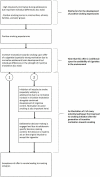Adolescent brain maturation and smoking: what we know and where we're headed
- PMID: 25025658
- PMCID: PMC4451244
- DOI: 10.1016/j.neubiorev.2014.07.003
Adolescent brain maturation and smoking: what we know and where we're headed
Abstract
Smoking is a leading cause of mortality and morbidity worldwide. Smoking initiation often occurs during adolescence. This paper reviews and synthesizes adolescent development and nicotine dependence literatures to provide an account of adolescent smoking from onset to compulsive use. We extend neurobiological models of adolescent risk-taking, that focus on the interplay between incentive processing and cognitive control brain systems, through incorporating psychosocial and contextual factors specific to smoking, to suggest that adolescents are more vulnerable than adults to cigarette use generally, but that individual differences exist placing some adolescents at increased risk for smoking. Upon smoking, adolescents are more likely to continue smoking due to the increased positive effects induced by nicotine during this period. Continued use during adolescence, may be best understood as reflecting drug-related changes to neural systems underlying incentive processing and cognitive control, resulting in decision-making that is biased towards continued smoking. Persistent changes following nicotine exposure that may underlie continued dependence are described. We highlight ways that interventions may benefit from a consideration of cognitive-neuroscience findings.
Keywords: Adolescence; Cognitive control; Incentive processing; Nicotine dependence.
Copyright © 2014 Elsevier Ltd. All rights reserved.
Figures

References
-
- Abreu-Villaca Y, Seidler FJ, Qiao D, Tate CA, Cousins MM, Thillai I, Slotkin TA. Short-term adolescent nicotine exposure has immediate and persistent effects on cholinergic systems: critical periods, patterns of exposure, dose thresholds. Neuropsychopharmacology. 2003;28:1935–49. doi: 10.1038/sj.npp.1300221. - PubMed
-
- Adriani W, Macri S, Pacifici R, Laviola G. Peculiar vulnerability to nicotine oral self-administration in mice during early adolescence. Neuropsychopharmacology. 2002;27:212–24. doi: 10.1016/S0893-13X(02)00295-6. - PubMed
Publication types
MeSH terms
Grants and funding
LinkOut - more resources
Full Text Sources
Other Literature Sources
Medical

